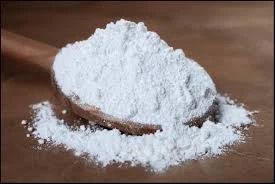
Styrene and Butadiene
Styrene and Butadiene A Comprehensive Overview
Styrene and butadiene are two vital organic compounds that play an essential role in the production of various materials, particularly in the field of synthetic rubber and plastics. Their significance in industrial applications cannot be overstated, as they are foundational building blocks in many products that form the backbone of everyday life.
Styrene, chemically known as phenylethylene, is an aromatic hydrocarbon that is primarily used to produce polystyrene, a widely used plastic. Styrene is characterized by its attractive properties such as clarity, rigidity, and resistance to impact. This makes it a favorable choice for a variety of applications, from packaging and insulation to consumer goods and automotive parts. The polymerization of styrene leads to the formation of polystyrene, which can be further modified to achieve different properties—such as expanded polystyrene (EPS), known for its lightweight and insulating qualities, commonly used in packaging and construction.
On the other hand, butadiene is a colorless gas that is crucial in the Synthetic Rubber Industry. It is an unsaturated hydrocarbon mainly derived from petroleum. The primary application of butadiene is in the production of synthetic rubber, particularly in the manufacturing of styrene-butadiene rubber (SBR), which is one of the most commonly used types of synthetic rubber. SBR rubber exhibits excellent wear resistance and aging stability, making it ideal for tire production, footwear, and various industrial products.
styrene and butadiene

The chemical relationship between styrene and butadiene is significant; they can be copolymerized to create a range of materials that combine the desirable properties of both compounds. For instance, the styrene-butadiene copolymer (SBC) is widely utilized in the formulation of adhesives and sealants due to its excellent adhesive properties and flexibility. The ability to tailor the properties of these copolymers according to specific application requirements opens up numerous possibilities for innovation in the materials science sector.
The production of styrene and butadiene primarily involves cracking processes in oil refineries, where larger hydrocarbons are broken down into smaller, more versatile compounds. The process is often complex and requires careful control to ensure high yields and minimal environmental impact. As industries become more environmentally conscious, efforts are being made to enhance the sustainability of their production methods.
Moreover, the growing demand for eco-friendly alternatives has prompted research into bio-based feedstock for the production of styrene and butadiene. This includes exploring the use of renewable resources, which can potentially reduce the carbon footprint associated with their production.
In conclusion, styrene and butadiene are indispensable components in modern industry, particularly within the plastics and rubber sectors. Their chemical properties and the versatility of their derivatives allow for a wide range of practical applications. As technology evolves and sustainability becomes a priority, these compounds will likely continue to be at the forefront of material science innovations, shaping the future of various industries.
-
nitrile-rubber-honoring-strict-production-standardsNewsAug.22,2025
-
aspartame-ingredients-honoring-food-safety-valuesNewsAug.22,2025
-
fertilizer-for-balanced-plant-nutritionNewsAug.22,2025
-
cyanide-gold-processing-with-high-purity-additivesNewsAug.22,2025
-
formic-acid-in-textile-dyeing-applicationsNewsAug.22,2025
-
aluminum-hydroxide-gel-in-skincare-productsNewsAug.22,2025
-
Regulatory Compliance for Global Mining Chemicals UseNewsAug.12,2025
Hebei Tenger Chemical Technology Co., Ltd. focuses on the chemical industry and is committed to the export service of chemical raw materials.
-

view more DiethanolisopropanolamineIn the ever-growing field of chemical solutions, diethanolisopropanolamine (DEIPA) stands out as a versatile and important compound. Due to its unique chemical structure and properties, DEIPA is of interest to various industries including construction, personal care, and agriculture. -

view more TriisopropanolamineTriisopropanolamine (TIPA) alkanol amine substance, is a kind of alcohol amine compound with amino and alcohol hydroxyl, and because of its molecules contains both amino and hydroxyl. -

view more Tetramethyl Thiuram DisulfideTetramethyl thiuram disulfide, also known as TMTD, is a white to light-yellow powder with a distinct sulfur-like odor. It is soluble in organic solvents such as benzene, acetone, and ethyl acetate, making it highly versatile for use in different formulations. TMTD is known for its excellent vulcanization acceleration properties, which makes it a key ingredient in the production of rubber products. Additionally, it acts as an effective fungicide and bactericide, making it valuable in agricultural applications. Its high purity and stability ensure consistent performance, making it a preferred choice for manufacturers across various industries.





